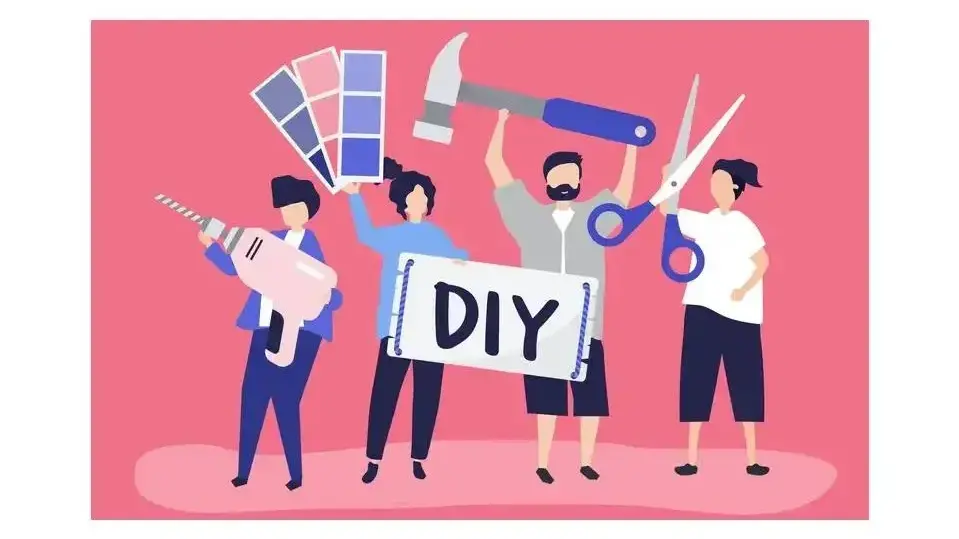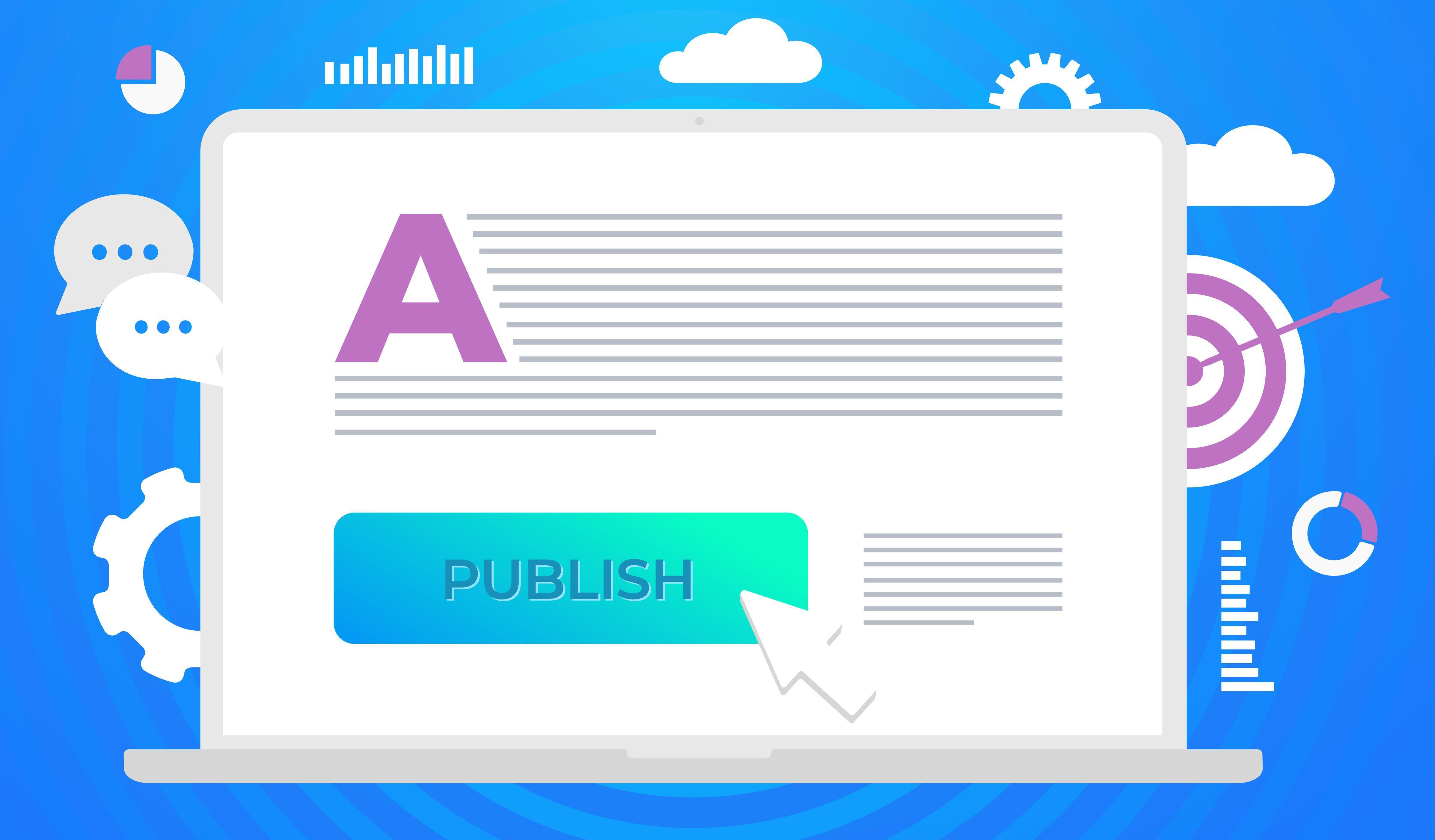Have you ever finished a DIY project and thought about sharing it, or considered turning a DIY blog into your full-time job?
Starting a DIY blog is accessible to anyone and doesn't require a huge investment.
Whether you're looking to be recognized and paid for your creations or simply want a space to share your projects and ideas, we've got practical tips to help you get started.
Why Start A DIY Blog?

Before we get technical about the steps required to start a blog, let’s quickly review why running a DIY blog is such a great idea.
Share Your Ideas: A DIY blog allows you to voice your experience and insights; inspire and engage with others.
Source of Income: Your DIY blog can provide you with full-time or part-time income if you have the right blogging strategy and implement it properly.
Creative Outlet: One of the best ways to let your talent show and express your creative side to the world is by starting a DIY blog.
Show Off Your Projects: Ideal platform for sharing your work with friends, family, and DIY enthusiasts globally.
Writing Skills: Besides your creativity, blogging will also give you the opportunity to refine your writing skills.
Excel In Your Career: You can Use your blog to add value to your resume and advance your career.
Steps to Start a DIY Blog

Follow these step-by-step instructions to get started on your DIY blog.
- Choose Your Niche
- Choose A Platform
- Pick A Domain Name
- Buy Your Hosting
- Customize Your Blog
- Create Logo and Essential Pages
- Publish Content
Step#1: Choose Your Niche
Choosing DIY as your blog's theme won't automatically attract a dedicated audience. It's important to focus on a more specific topic within the DIY world.
Find a niche that stands out yet is wide enough to offer numerous topics to cover and attract a large audience.
Some DIY niches you can decide between include:
- DIY home décor
- DIY furniture
- DIY landscaping
- DIY holiday décor
- DIY crafts
- DIY painting
- DIY electronics
- DIY sewing
Step#2: Choose A Platform
After choosing your blog's niche, the next step is selecting a blogging platform.
While there are many hosted or free blogging platforms like Squarespace, Wix, and Blogger, they come with limitations such as potential content removal, growth restrictions, and limited customization.
With these limitations, you won’t be able to stand out from the crowd.
Instead, consider using WordPress. It's user-friendly, free, and allows extensive customization with numerous themes and plugins.
WordPress offers a solid foundation for a successful and profitable DIY blog. It will give you full control over your blog, allowing unlimited customization to make your blog unique and scalable.
For an optimal experience, consider checking out specialized hosting for WordPress with Verpex to further enhance your site’s performance and scalability.
Opting for a hosting-based solution lays down a solid groundwork for a successful and profitable DIY blog.
Step#3: Pick A Domain Name

Choose a short, straightforward domain name that avoids complex words and doesn't limit future content.
For example, "DIY Holiday Décor" offers more flexibility than "DIY Christmas Décor."
Use Verpex to see if your desired domain is available.
If the domain name is taken, consider foreign words or synonyms as alternatives. Once satisfied with your blog's name, you can proceed to the next step.
Step#4: Buy Your Hosting
After picking your blog's name, the next step is selecting a web host. Consider these key factors when choosing one.

Available storage
If you only need a little space, opt for cheaper plans and save money by only paying for the space you need. On the other hand, if you need lots of space, make sure that your web host offers the amount of space you need so you don’t run out of memory.

Uptime
When choosing a hosting provider, consider site availability, or uptime. Aim for providers offering more than 99% uptime to avoid frustrating visitors with inaccessible pages.

Security
It is not a simple task to trust someone to host your site. You need to pick a web hosting provider that offers constant backups and an information redundancy system. This way, if any issues occur, your site will always be fully operational and online.
Other things you should keep an eye out for are the loading speed, customer support, and extra benefits that the web hosting provider offers.
For your DIY blog, it's important to know the different types of hosting and what your site needs. We suggest considering Shared or hosting for WordPress and managed hosting if you need extra support with apps and systems.
Step#5: Customize Your Blog

After selecting your niche and domain, the next step is to find a matching theme.
WordPress offers both free and paid themes.
To access free themes, simply log into your WordPress dashboard, click on "Appearance," then "Themes." Keep in mind, that free themes are less customizable than paid ones.
Step#6: Create Logo and Essential Pages
To make your blog easily recognizable, you’ll need to create a brand logo.
You can use online tools like Canva, Shopify's Logo Generator, or better still, hire freelancers on Fiverr or Upwork to design one for you.
The essential pages of your blog should include the following:
Contact Page: Offers ways to reach you, including email, phone, and address.
About Page: Share your story, motivations for blogging, and updates about your journey.
Privacy Policy: Ensures reader privacy rights are protected.
Step#7: Publish Content

After setting up your blog's key pages and designing your logo, you're all set to post content! Your DIY blog can feature various types of content, such as:
- Slideshows
- Image-heavy content
- Podcasts
- News-type articles,
- List posts
- Video tutorials
- How-to articles
Mixing content types, like combining video, text, and images in one post, engages readers and helps with SEO.
To keep your audience interested, use clear formatting—like bullet points, headings, and readable fonts.
Before promoting your DIY blog, ensure you have at least ten posts published. This gives first-time visitors plenty to explore and encourages them to return.
Advanced SEO Techniques for DIY Blogs
Optimizing your DIY blog for search engines goes beyond basic keywords and meta descriptions.
To truly stand out in search results and attract a dedicated following, implementing advanced SEO techniques is crucial.
Here are some strategies to elevate your DIY blog's search engine performance:
Focus on Long-Tail Keywords: Use specific phrases for less competition and more targeted traffic.
Optimize for Featured Snippets: Answer questions clearly and use bullet points for a chance to appear at the top of search results.
Improve User Experience: Ensure fast loading, mobile-friendliness, easy navigation, and quality content.
Leverage Internal Linking: Use links to keep readers engaged and improve site authority.
Create Video Content: Enhance posts with instructional videos to boost engagement and direct traffic.
Utilize Schema Markup: Help search engines understand your content for better relevance in searches.
Build Quality Backlinks: Gain traffic and credibility through reputable site links.
Engage in Community and Forums: Participate in DIY communities for natural backlinks and direct traffic.
Update Old Content Regularly: Refresh posts with new information to maintain relevance and rankings.
Maximizing Engagement: Interactive Features for Your DIY Blog
To build a thriving community around your DIY blog, it's essential to engage your readers with more than just static posts.
Incorporating interactive features can transform passive readers into active participants, fostering a sense of community and increasing engagement.
Let’s quickly review some strategies you can implement to enhance interactivity on your DIY blog.
Polls and Surveys
Gauge your audience’s interests or gather feedback on the content they’d like to see by embedding polls and surveys in your posts or sidebar. This can help tailor your content to meet your readers' needs and preferences.
DIY Project Challenges
Encourage your readers to participate in themed DIY challenges. Ask them to share their projects using a specific hashtag on social media or submit photos directly to your blog.
Highlighting participant projects in a follow-up post can motivate more readers to join in.
Interactive Tutorials and Guides
Incorporate interactive elements into your tutorials, such as clickable steps, hover-over tips for additional information, or adjustable difficulty levels.
These features can help cater to a wider range of skill levels and learning styles.
Comment Section Q&A
Actively engage with your readers in the comment sections of your posts. Encourage them to ask questions or share their own tips and experiences related to the DIY project.
Prompt response from you can create a lively discussion and build a community feel.
User-Generated Content Galleries
Invite your readers to submit photos of their completed projects based on your tutorials.
Showcase these in a dedicated gallery on your blog or feature them in social media posts.
Seeing their work highlighted can encourage readers to engage more deeply with your content.
Final Remarks
Starting a DIY blog isn't about being an expert but sharing your DIY experiences, successful or not, with fellow enthusiasts.
It's the quality of your storytelling and information that will keep readers coming back, not just your knowledge.
Follow the outlined steps to set up your blog basics. Keep things simple and consistent. And remember, success takes time, but with persistent effort, you'll build your DIY blog sooner than you might expect.
Frequently Asked Questions
Do DIY blogs make money?
Yes, DIY blogging can bring you are steady income. There are several effective and proven methods to monetize your DIY blog and earn some real money.
How do DIY blogs make money?
Some ways you can make money from your DIY blog include sponsored content, direct sales, advertising space, ad networks, affiliate programs, and so on.
Is blogging dead?
The answer is definitely NO! Some of the most shared content online are blog posts, so you can be sure you can still make money from it.
What are the most common types of blogs?
The most common types of blogs are affiliate blogs, niche blogs, business blogs, and personal blogs.
Can I start a blog with no money?
Yes, you can start a blog with little to no upfront financial investment. The key is to leverage platforms and resources that minimize costs, especially in the beginning. Unmanaged Wordpress subscriptions for instance costs only a few dollars monthly.
How do I start a blog with nothing to say?
If unsure what to write about, consider a blog's purposes — to educate, showcase your work, inspire, share personal insights, and motivate readers. As good practice, start by exploring your interests or daily experiences for inspiration. Engage with other blogs, books, or news to spark ideas. Start writing drafts to develop your voice and topics.

I've been navigating the web hosting waters for years now. As the Chief Editor at Verpex, I team up with some awesome writers to dish out the good stuff on hosting. Got a Master's in Journalism, so I always have an eye out for quality. Whether you're just dipping your toes or you're a seasoned surfer, I'm here to make everything web hosting feel like a breeze
View all posts by Julia Lozanov



















